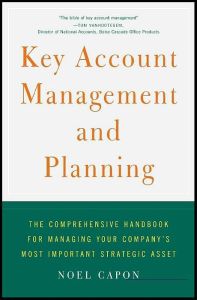Join getAbstract to access the summary!

Join getAbstract to access the summary!
Noel Capon
Key Account Management and Planning
The Comprehensive Handbook for Managing Your Company's Most Important Strategic Asset
Free Press, 2001
What's inside?
How to manage your key accounts properly through development, planning and implementation.
Recommendation
Not surprisingly, the author of this exhaustive guide to key account management is a professor: Noel Capon of the Columbia University Graduate School of Business. His meticulous manual on key account management certainly could be used to teach a course on the subject. He thoroughly explains why corporations turn to key account management to handle their biggest customers. He outlines the benefits to these firms and their clientele, covering every stage of the account management process: selection of clients, key account organization, recruitment, training, research, analysis, strategy, step-by-step action and implementation. Capon’s liberal use of real-life stories, graphs, and examples of what works and what doesn’t helps break up the dry, complex material. This reference book requires commitment and concentration, but getAbstract considers it essential reading for anyone in corporate sales and key account management, or for any sales manager who is considering a key account management system.
Summary
About the Author
Noel Capon, a business professor at Columbia University, has written more than 80 articles and several books.


















Comment on this summary